Technology changes with time, but the fundamentals and recipes in photography remains. This article was first published in 2012, revised in 2018
Over the centuries, Mankind has been fascinated with landscape. Poets wrote poems and verses on landscape. Painters paint landscapes with their brushes and styles. Photographers photograph landscapes and do digital imaging to enhance the images. No doubt that landscape photography is one of the most popular specializations of photography.
Handphone cameras and DSLRs/Mirrorless cameras are good to use for photographing landscape. For Handphone cameras, the Landscape mode is useful to simply take a shot of the landscape from a distance. For the DSLRs/Mirrorless cameras users, there is a wide range of modes, as well as lenses that include the super wide angle through to telephoto lenses, to photograph the landscape with different angles of coverage.
The use of a tripod and a low ISO will be preferred to achieve good quality images. This is assuming there is no jerking of the camera (mounted on tripod) when the shutter release button is pressed. Any of the four modes (Program, Aperture Priority, Shutter Priority and Manual) can be used based on the personal preference of the photographer as well as the effect which the photographer wants to achieve.
Below are some pointers that could prove useful and the application can be found in the following case studies:
- Shoot both portrait and landscape angle
- Flat Light
- Golden Light
- Seasons – hues of autumn and icy winter
- Water feature
- Colours
- Reflection
- Solitude
- Curves
- Layers to create depth
- Landforms
- Valley
- Pastures
- Arid Desert
- Clouds
- Mystical mist
- Magnificent Mountain Range
- Folktale
The pointers above are not exhaustive but if you bear them in mind and study the case studies below, you may find photographing landscape can be an enjoyable experience.
Shoot both portrait and landscape angle
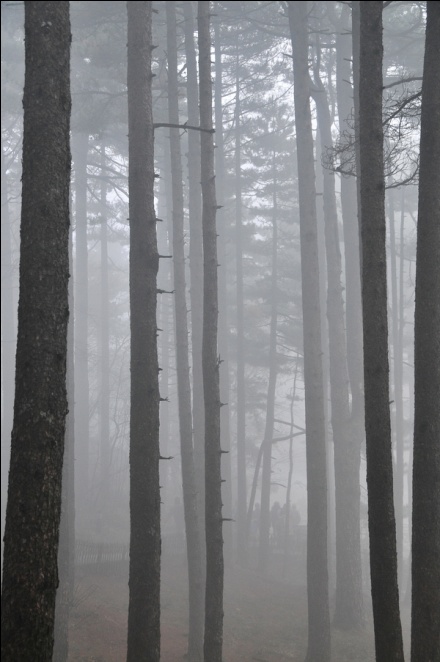 |
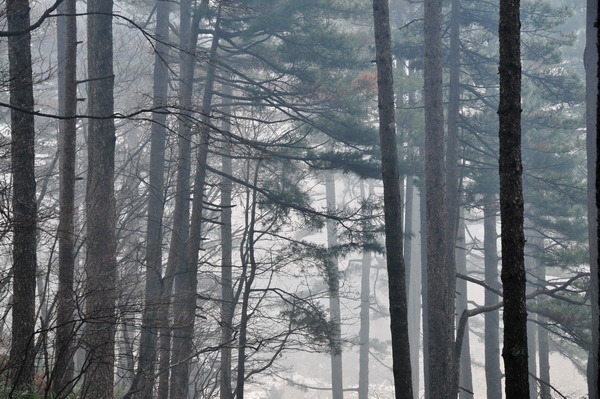 |
| It has been a common practice for landscape photographers to photograph the landscape both in portrait and landscape format. One of the main reasons being this allows the photographers to have more options when they sell the pictures to publishers who may want to use the portrait format for cover page or horizontal format for insertion in their article. Besides photographing the vertical and horizontal angles, it is also a good practice to photograph the landscape scene at different focal lengths, with some wide angle shot at for example 18mm, some mid range shots at approximately 105mm and some tele-shots at approximately 200mm, depending on the nature of the subject. The more options, the better it is. | |
Flat Light
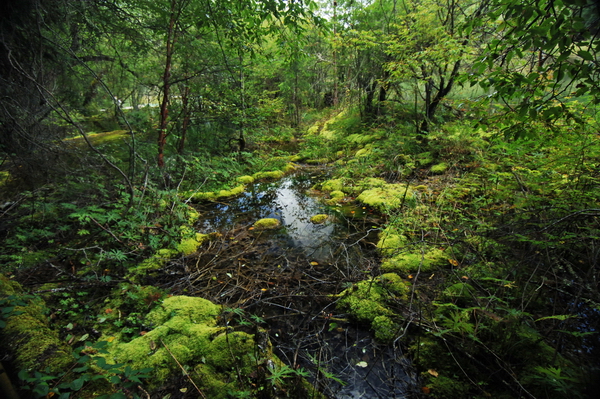
Matrix Metering, Daylight White Balance, IS400, Program Mode, Shutter speed 1/30s, Aperture f5, focal length set at 12mm, EV set at -0.7
The green surrounding the puddle of water caught my attention as I walked along the man-made platform which gave me access to various parts of the natural reserve in JiuZhaiGou, China. The lighting was pretty flat as it was a cloudy day, short of rain, and I had no tripod with me, given the fact that this would be a long walk. I wished I had an assistant then to carry my tripod. I shot this angle with a 12-24mm wide angle lens, focal length set to 12mm which allowed me to photograph in this low light condition without camera shake at shutter speed 1/30 of a second. To make the colours more saturated and to get a faster shutter speed, I under-exposed the shot by EV -0.7
Golden Light
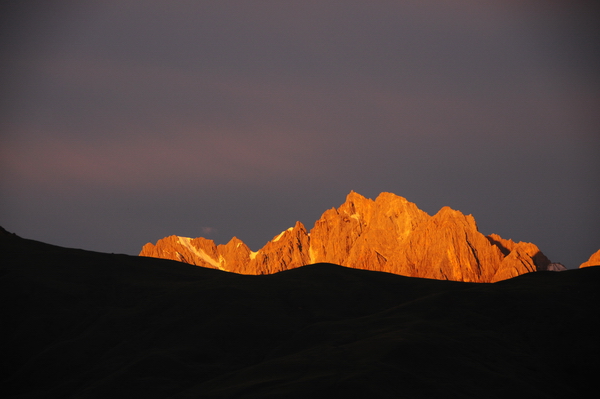
Centre Weighted Metering, Daylight White Balance, ISO320, Aperture Priorty Mode, Shutter speed 1/100s, Aperture f5.6, focal length set at 105mm, EV set to -1.0
I woke up when my photography students in the rooms next to me screamed. All of us were provided with rooms that had the windows facing the mountain in our trip to Sikkim. I thought what happened, went to the window and what appeared in front of me was a spectacular golden glow lighting up the mountain. I knew that this will not last long, I opened the window, shouted “Get the tripod, set to biggest aperture in Aperture Priority mode, low ISO and shoot!” I had no time for my tripod as it was packed in my luggage. I set to the biggest aperture I could get at f5.6 when the focal length was set to 105mm, which allowed me to cover this angle. There was no need for small aperture as the mountain is so far away. I under-exposed the shot to get a more saturated colour as well as a faster shutter speed, since I had digital imaging software to adjust the exposure later. I achieved 1/100 of a second shutter speed and fired away. Within 15 minutes, the golden glow was gone. What a morning! I wished someone was trekking on the silhouetted foreground which would make an excellent subject, I wish!
Seasons – hues of autumn and icy winter
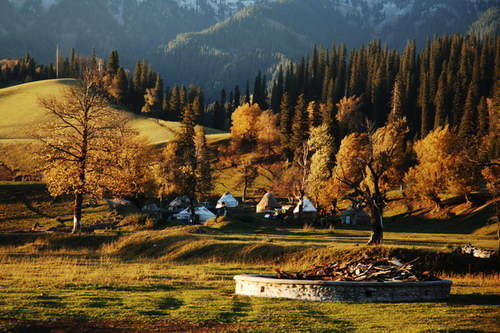
Centre Weighted metering, Daylight White Balance, ISO160, Aperture Priority Mode, Shutter speed 1/100s, Aperture f4.5, focal length set at 70mm
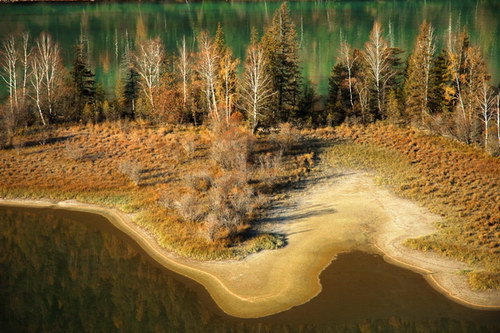
Centre Weighted metering, Daylight White Balance, ISO400, Aperture Priority Mode, Shutter speed 1/1250s, Aperture f4.5, focal length set at 70mm
(Both pictures on top) Spring, Summer, Autumn, Winter. All year round, in the northern hemisphere, photographers are able to experience the splendours of the four seasons. In autumn, the trees exhibit hues of golden yellow as they prepare for winter. This time of the year, many photographers flock to the outskirts to photograph the landscape in their golden splendour. I shot various angles, from a wide angle and zoomed in. Some digital imaging was done to further exaggerate the gold hues. Time of the day when the photograph was shot is also very important. The best time would be early morning or late afternoon. Avoid photographing during noon time as the lighting will be very harsh at that of the day.
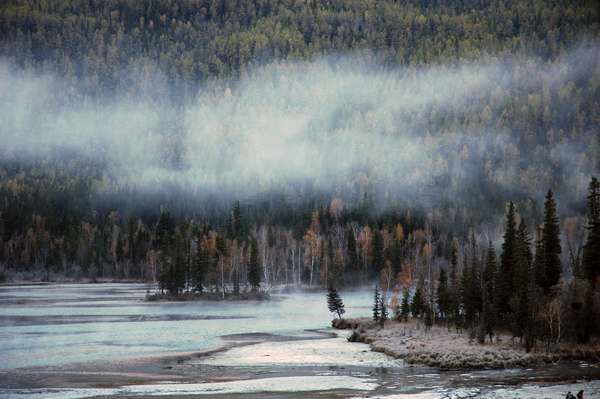
Centre Weighted metering, Daylight White Balance, ISO320, Aperture Priority Mode, Shutter speed 1/125s, Aperture f4.5, focal length set at 70mm
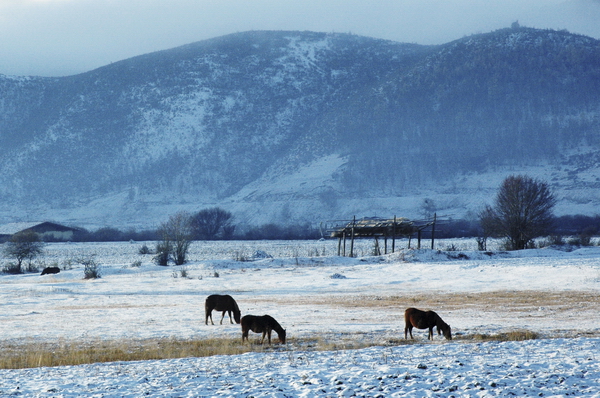
Centre Weighted metering, Daylight White Balance, ISO400, Aperture Priority Mode, Shutter speed 1/500s, Aperture f4.5, focal length set at 70mm
(Both pictures on top) Winter comes, the land being blanketed by a white carpet of snow. Some call it wonderland where snow men are made. For landscape photography, a different mood is evoked. Despite the plain white façade of the snow scene, contrasting subjects like trees, houses and animals are what made the pictures filled with life. It could be horses grazing at whatever grass they could find, the dark pine trees in the mountains or cottages with smoke emitted from the chimney. Digital enhancement has to be done to adjust the colour tones of the snow scene.
Water feature
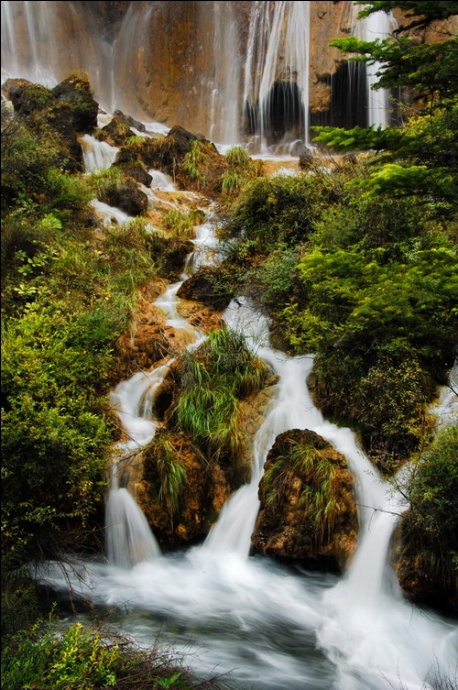
Matrix metering, Daylight White Balance, ISO100, Aperture Priority Mode, Shutter speed 1 second, Aperture f22, focal length set at 32mm
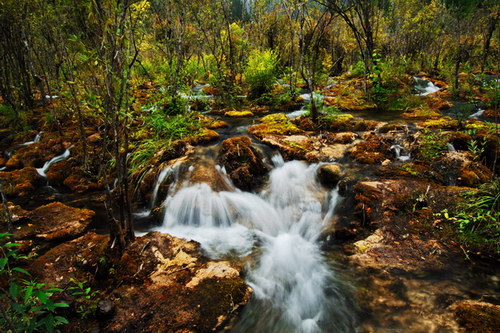
Matrix metering, Daylight White Balance, ISO100, Aperture Priority Mode, Shutter speed 1 second, Aperture f22, focal length set at 14mm
(Both pictures on top) Time to use the tripod. Moving water, nice meandering flow in the midst of lush greenery. I wanted to achieve the effect where the water turns into a silky blur effect. ISO was set to the lowest at ISO100. At Aperture Priority mode set to the lowest aperture f22. What resulted was a 1 second shutter speed which is enough to achieve the desired effect of blur water. In case if the sunlight is too strong and 1 second shutter speed cannot be achieved, the use of Neutral Density filter can be used to slow down the shutter speed. For such angle, it would be advisable to shoot at least 10 shots to have a lower chance of camera shake even though a tripod was used. Better to use a cable release or self timer to minimize the jerk when you press the shutter button.
Colours
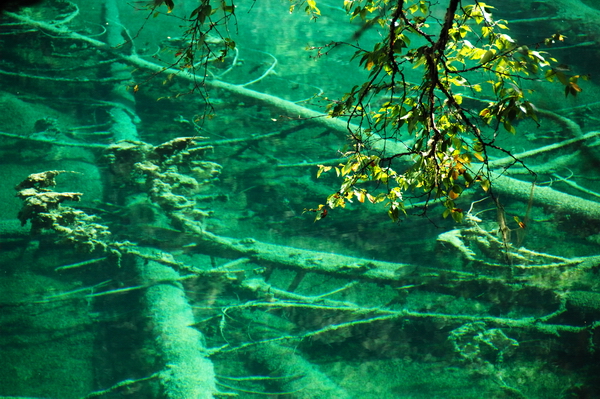
Centre Weighted metering, Daylight White Balance, ISO400, Aperture Priority Mode, Shutter speed 1/250s, Aperture f5.6, focal length set at 135mm, EV set at -0.3
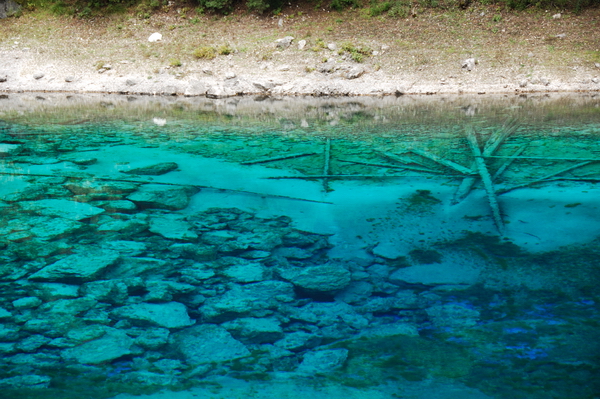
Matrix metering, Daylight White Balance, ISO200, Program Mode, Shutter speed 1/80s, Aperture f5, focal length set at 70mm
(Both pictures on top) Lakes in certain places on earth exhibit interesting colours, including those in JiuZhaiGou also known as “Paradise on Earth” located in China. Centuries of undisturbance by Mankind left much of the nature reserve well preserved in its original state. One can appreciate the different shades of colour due to the shadow areas in the bottom of the lake. It was said that numerous minerals in the water resulted in the different colours. This is a place worth revisiting, as the nature reserve is too big to be photographed in just a few weeks. The high altitude also did not help much as the air is thin with low oxygen level and it is easy to be breathless.
Reflection
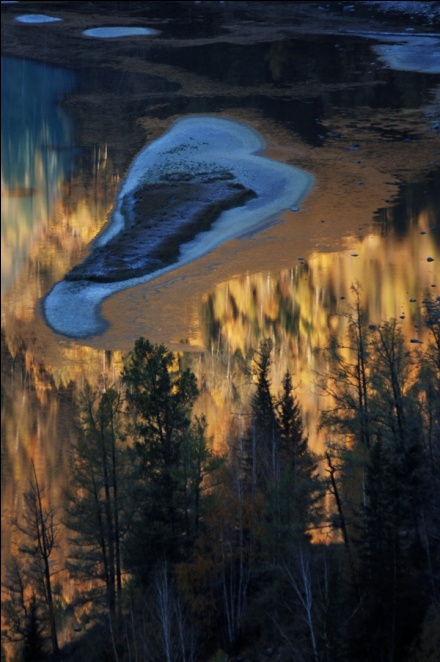
Centre Weighted Metering, Daylight White Balance, ISO250, Aperture Priority Mode, Shutter speed 1/500s, Aperture f2.8, focal length set at 185mm, EV set to -0.3
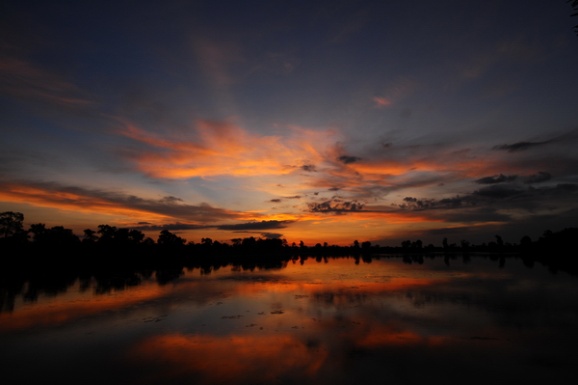
Matrix Metering, Daylight White Balance, ISO200, Program Mode, Shutter speed 1/125s, Aperture f5.6, focal length set at 14mm, EV set to -1.0
(Both pictures above) The lake in the morning is calm. Cold air abounds but there is no strong wind. The lake turns into a gigantic mirror to reflect the colours of the skies. Digital enhancement has to be done to saturate the colours further. If at all possible, it is good to use a tripod, set to a low ISO to get the shot done. There is no need to use a very small aperture such as f22 as the trees and mountains are very far away. Once again, the best time to photograph these scenes will be early morning or late afternoon when the lighting is not too harsh. The pictures can also be slightly under exposed so that the colours would appear more saturated and at the same time, minimize hot spots where certain areas are washed out in white.
Solitude
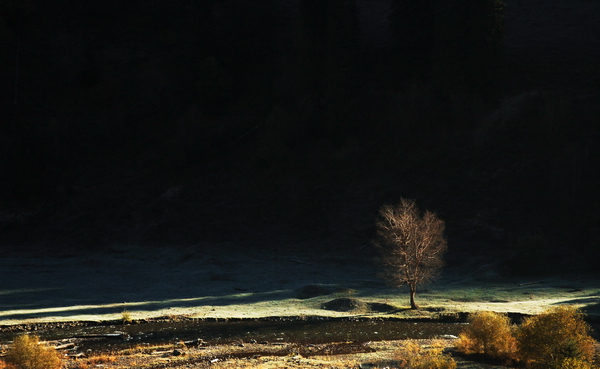
Centre Weighted Metering, Daylight White Balance, ISO640, Aperture Priority Mode, Shutter speed 1/2000s, Aperture f4.5, focal length set at 55mm, EV set to -0.7
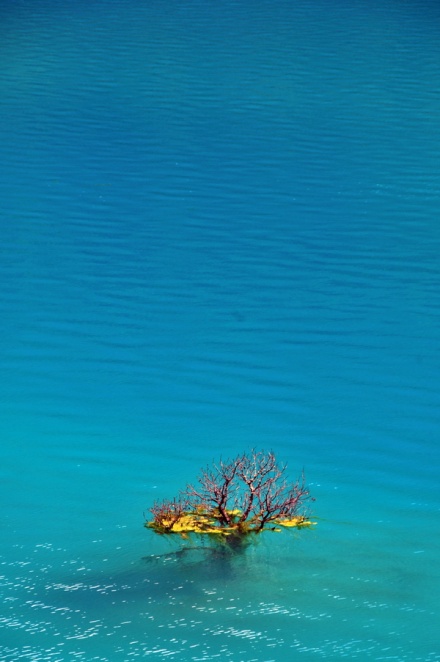
Centre Weighted Metering, Daylight White Balance, ISO200, Program Mode, Shutter speed 1/320s, Aperture f9, focal length set at 135mm
(Both pictures above) A single subject can stand out very well against a huge background uniform in colour or tones. These pictures showcase space in a landscape picture which made it look so clean and neat, gentle on the eyes and soothing to the senses. Not all subjects can be used to evoke a sense of solitude. The subject used should have a few qualities like contrasting colour against the background, distinctive shape amongst a few others. A thin brown trunk of a withered tree against a dark background would only camouflage the tree in the dark background.
Curves
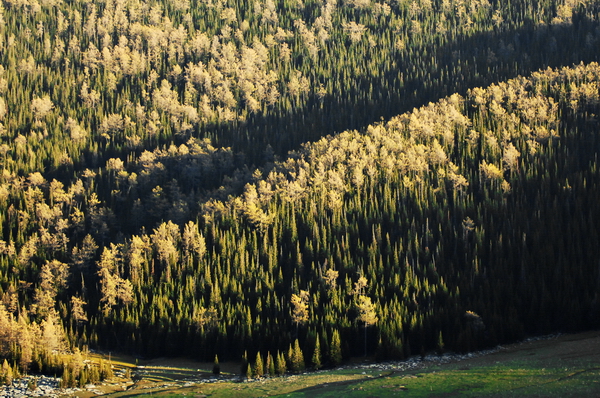
Centre Weighted metering, Daylight White Balance, ISO640, Aperture Priority Mode, Shutter speed 1/1250s, Aperture f2.8, focal length set at 80mm
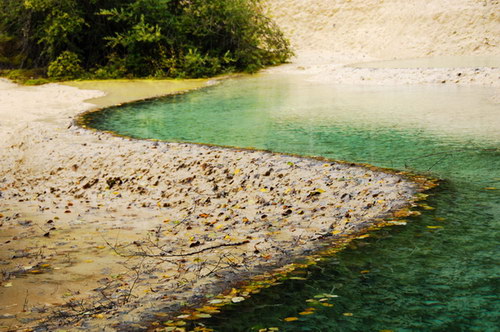
Matrix metering, Daylight White Balance, ISO200, Aperture Priority Mode, Shutter speed 1/200s, Aperture f5, focal length set at 60mm
(Both pictures above) It is never too late to start training yourself daily to observe lines, curves and patterns in our daily lives, of things around us be it on the way to work or back home. This daily training will be helpful when you shoot landscape photograph as you will be able to easily spot lines and curves. In front of you is a huge landscape where you need to isolate part of it to be photographed. Curves can appear in any part of the landscape in front of you. Try to spot them.
Layers to create depth
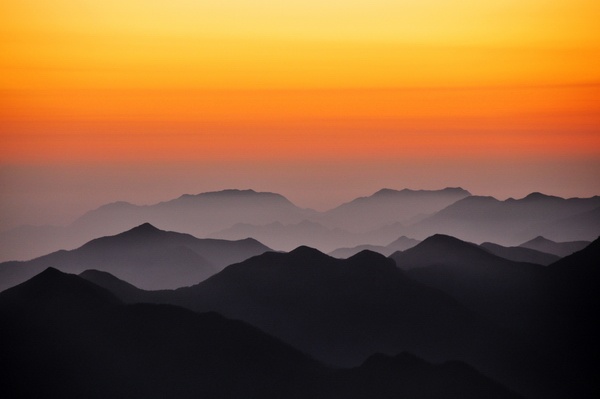
Centre Weighted Metering, Daylight White Balance, ISO400, Program Mode, Shutter speed 1/200s, Aperture f5.6, focal length set at 150mm
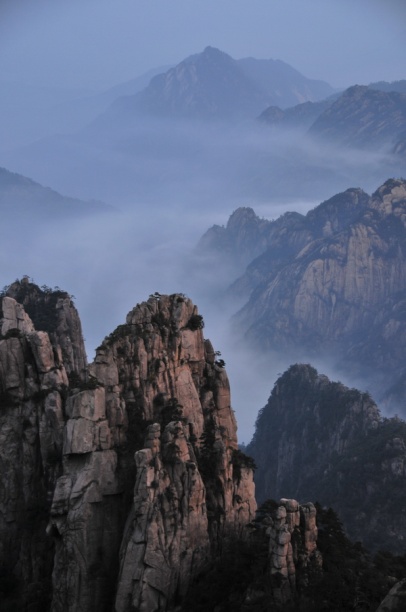
Centre Weighted Metering, Daylight White Balance, ISO250, Program Mode, Shutter speed 1/80s, Aperture f4.8, focal length set at 50mm, EV set to -0.7
(Both pictures above) Dynamic range in today’s digital single lens reflex camera has improved greatly as compared to the old days. More details, colour tones and shades can be better captured, probably better than the traditional film. The different mountain peaks can be shown clearly as different layers in the pictures above, showing a feeling of distance and depth.
Landforms
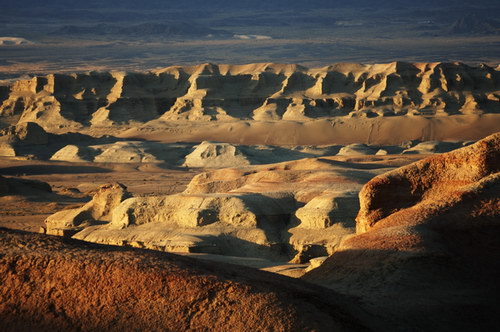
Centre Weighted metering, Daylight White Balance, ISO100, Aperture Priority Mode, Shutter speed 1/500s, Aperture f2.8, focal length set at 200mm
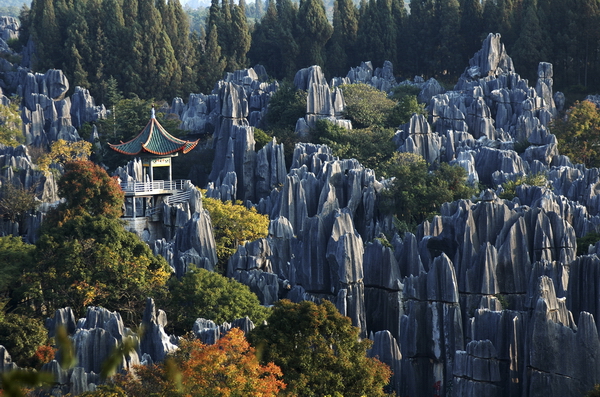
Centre Weighted metering, Daylight White Balance, ISO400, Aperture Priority Mode, Shutter speed 1/90s, Aperture f9, focal length set at 70mm
(Both pictures above) Landforms create interesting areas of shadow and highlight, thus revealing the contours of the lime stones cliffs, boulders and others. Noon time will not be a good time to photograph such landforms as the lighting is too harsh and there is little shadow to reveal the contours. Best time will be, as usual, early in the morning or late in the afternoon. For the early morning shoot, it is not uncommon to wake up at 4am to start driving to the photography location. As the saying goes, “Early bird catches the worms”.
Valley
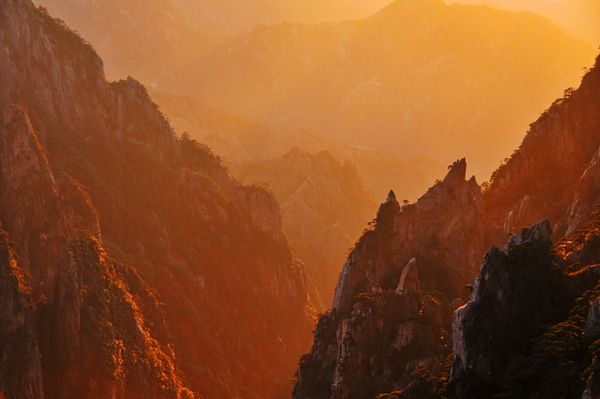
Centre Weighted metering, Daylight White Balance, ISO400, Program Mode, Shutter speed 1/160s, Aperture f6.3, focal length set at 48mm, EV set to -0.7
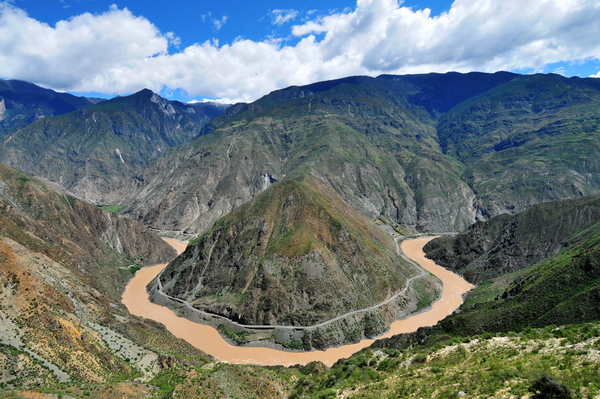
Centre Weighted metering, Daylight White Balance, ISO400, Program Mode, Shutter speed 1/400s, Aperture f10, focal length set at 12mm
(Both pictures above) The deep valleys on earth are some of the common contents for landscape photography. The deep valleys reflect your echoes when you shout out loud, and some can be so deep that you would not consider reaching out and look downwards. For some places, the valley can be a “U Turn” point for rivers to switch direction. Such turning points become somewhat of a tourist attraction due to its uniqueness.
Pastures
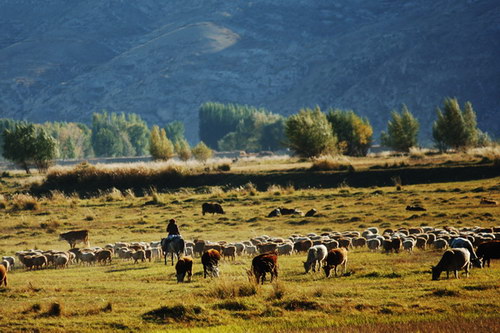
Centre Weighted metering, Daylight White Balance, ISO200, Aperture Priority Mode, Shutter speed 1/1600s, Aperture f3.2, focal length set at 200mm
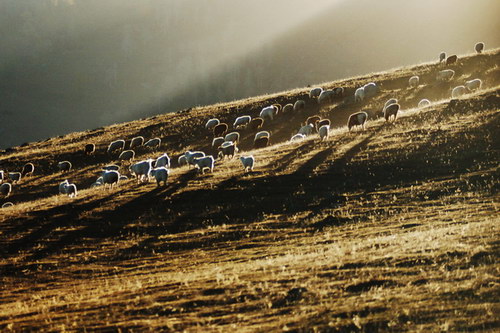
Centre Weighted metering, Daylight White Balance, ISO400, Aperture Priority Mode, Shutter speed 1/5000s, Aperture f2.8, focal length set at 105mm
(Both pictures above) Animals, especially sheeps, grazing in the pastures form good subject content for landscape photography. Backlight and sidelight are good to enhance the pictures.
Arid Desert
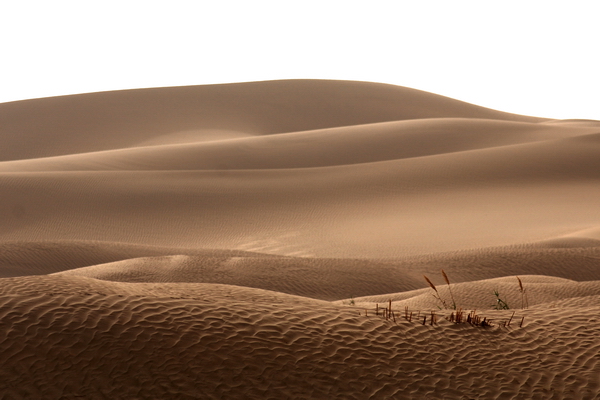
Centre Weighted metering, Daylight White Balance, ISO125, Aperture Priority Mode, Shutter speed 1/1250s, Aperture f5.6, focal length set at 185mm
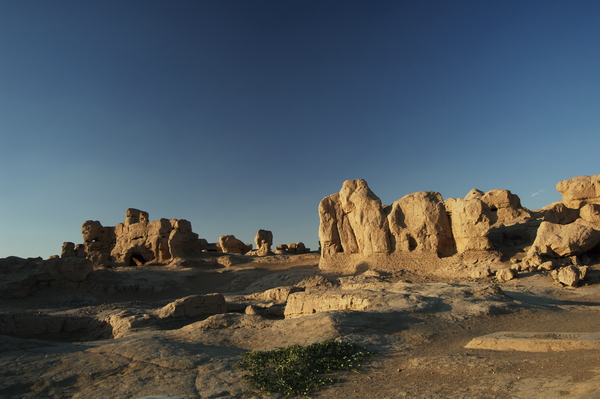
Centre Weighted metering, Daylight White Balance, ISO100, Program Mode, Shutter speed 1/100s, Aperture f5, focal length set at 19mm
(Both pictures above) The generally lifeless arid desert should not be left out from landscape photography. Arid deserts are not just sand lying in masses. What can be spotted are contours, interesting rock formations formed over the years of weathering as well as some desert plants which litters various parts of the so called lifeless land.
Clouds
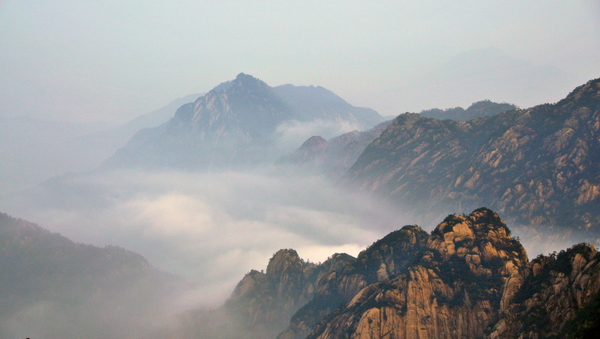
Centre Weighted metering, Daylight White Balance, ISO320, Program Mode, Shutter speed 1/60s, Aperture f4.8, focal length set at 55mm
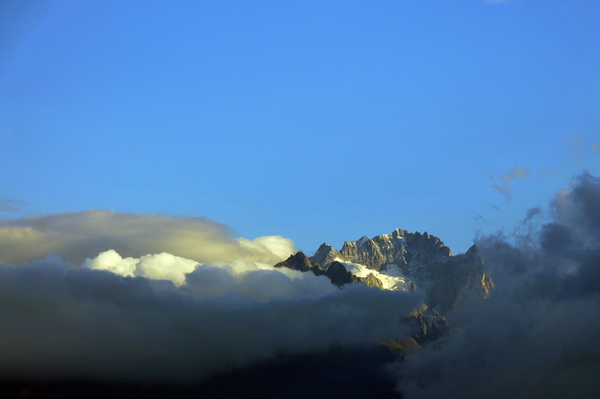
Centre Weighted metering, Daylight White Balance, ISO200, Aperture Priority Mode, Shutter speed 1/500s, Aperture f5.6, focal length set at 95mm
(Both pictures above) Clouds weaving in between the peaks of the mountains create sense of mystery as they cover and reveals different areas of the mountain peaks. Sometime, the clouds cover the entire peak, and if chance comes, the clouds will scatter and reveals the magnificent mountain peaks.
Mystical mist
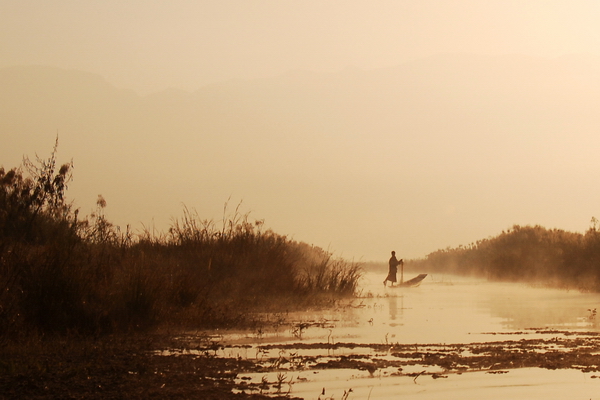
Matrix metering, Daylight White Balance, ISO200, Aperture Priority Mode, Shutter speed 1/1000s, Aperture f7.1, focal length set at 29mm
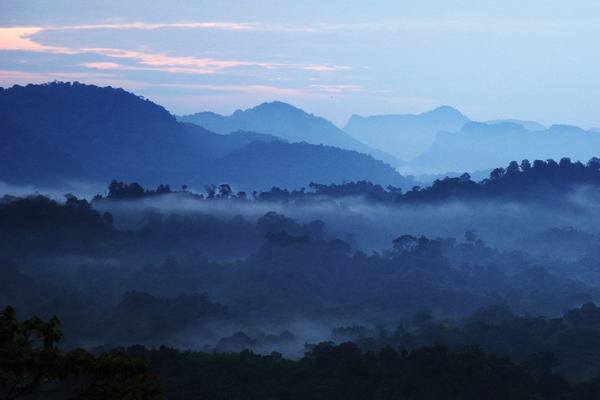
Centre Weighted metering, Daylight White Balance, ISO400, Aperture Priority Mode, Shutter speed 1/60s, Aperture f4.5, focal length set at 70mm
(Both pictures above) Early in the morning, mists and fog can be found in dense forests or on the cold waters of the lakes. These are not clouds but look alike though. The mist create a sense of mystery in the landscape. As in the case of the lake in sunrise, a fisherman appeared from a distance mist and rowed towards us.
Magnificent Mountain Range
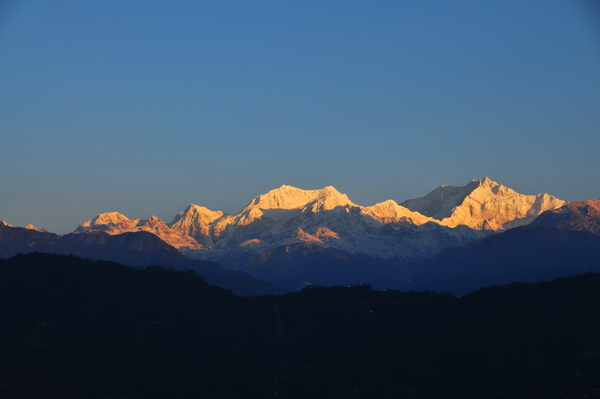
Centre Weighted metering, Daylight Wlte Balance, ISO200, Program Mode, Shutter speed 1/160s, Aperture f6.3, focal length set at 60mm
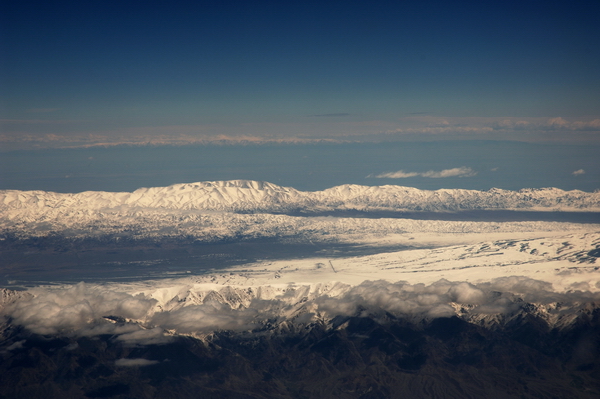
Centre Weighted metering, Daylight White Balance, ISO100, Program Mode, Shutter speed 1/350s, Aperture f10, focal length set at 70mm
(Both pictures above) Some of the most magnificent mountain ranges can be found in the Himalayas which stretch over a very long distance, visible from outer space. There are many angles which were used to photograph the mountain ranges, be it from the air, from the mountain peak or from a distant land. Early morning shows the snow capped mountain glowing in a subtle orange colour. From the air on a flight towards Lhasa in Tibet, I had a chance to photograph the vast mountain ranges from the window of the aeroplane. I made the right choice to have the window seat, for once.
Folktale
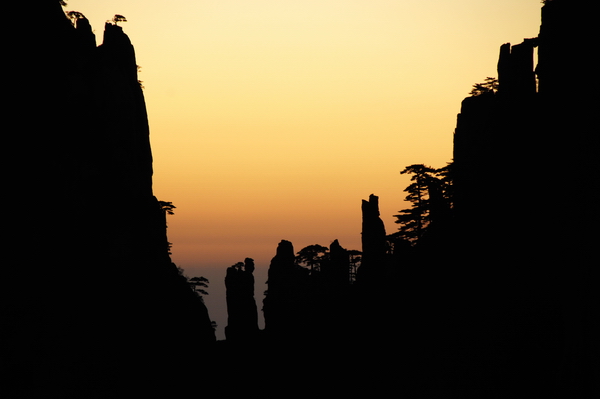
Centre Weighted metering, Daylight White Balance, ISO400, Program Mode, Shutter speed 1/125s, Aperture f5.6, focal length set at 170mm
Last but not least, many poetic Chinese in the ancient dynasties in China created many folk tales, poems, characters and short verses on the landscape they witnessed. For this case above, this is one of the rock formations on a peak in Huangshan, China. Thus was said, on the peak, 2 gentlemen were playing chess watched over by a guardian, while a herbalist carried a basket of herbs on his back and walked towards them. Try to visualize the characters. I made a joke out of it. My version is 2 gentlemen having steamboat, being served by a waiter who carries the dishes after taking orders from the manager. Anyway…..
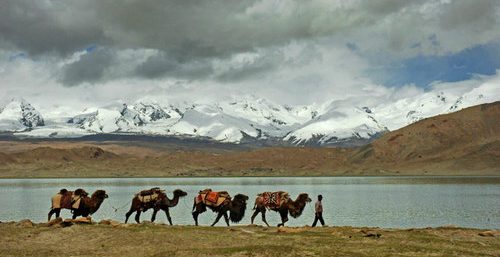
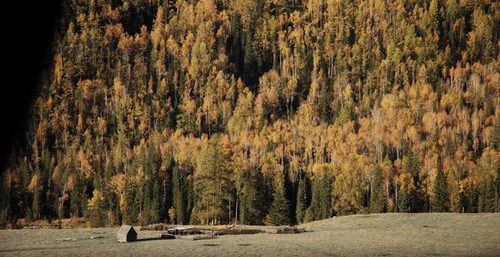


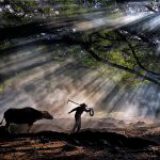
Great photos! May I please ask why do you mostly use centre weighted metering (vs evaluative metering) and big apertures for landscapes?
Very nice article. I was looking for a similar one which will be useful during travel.
Happy new year 2019. Many many for sending this. This is very nice guidelines for Landscape Photography
along Pictures.